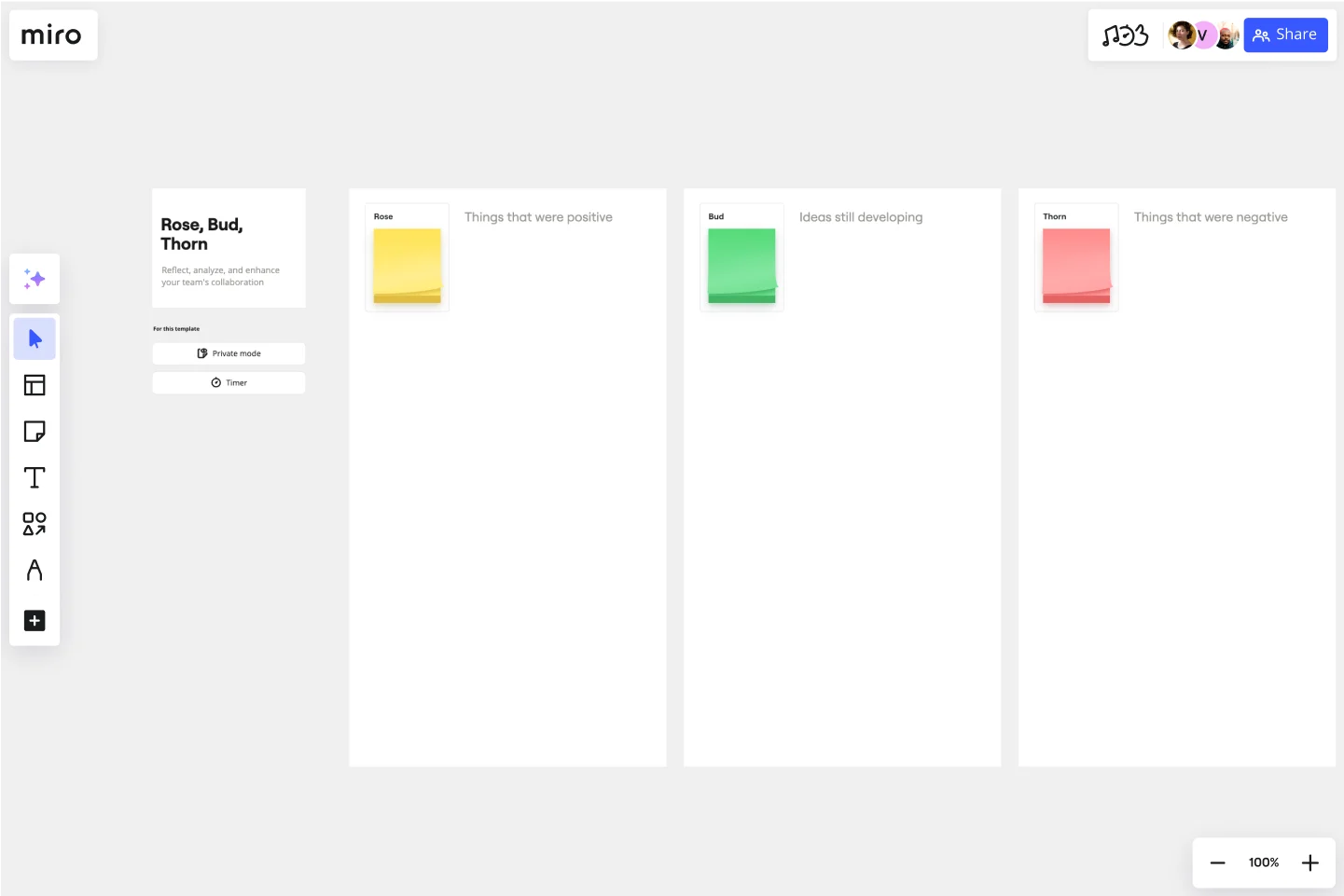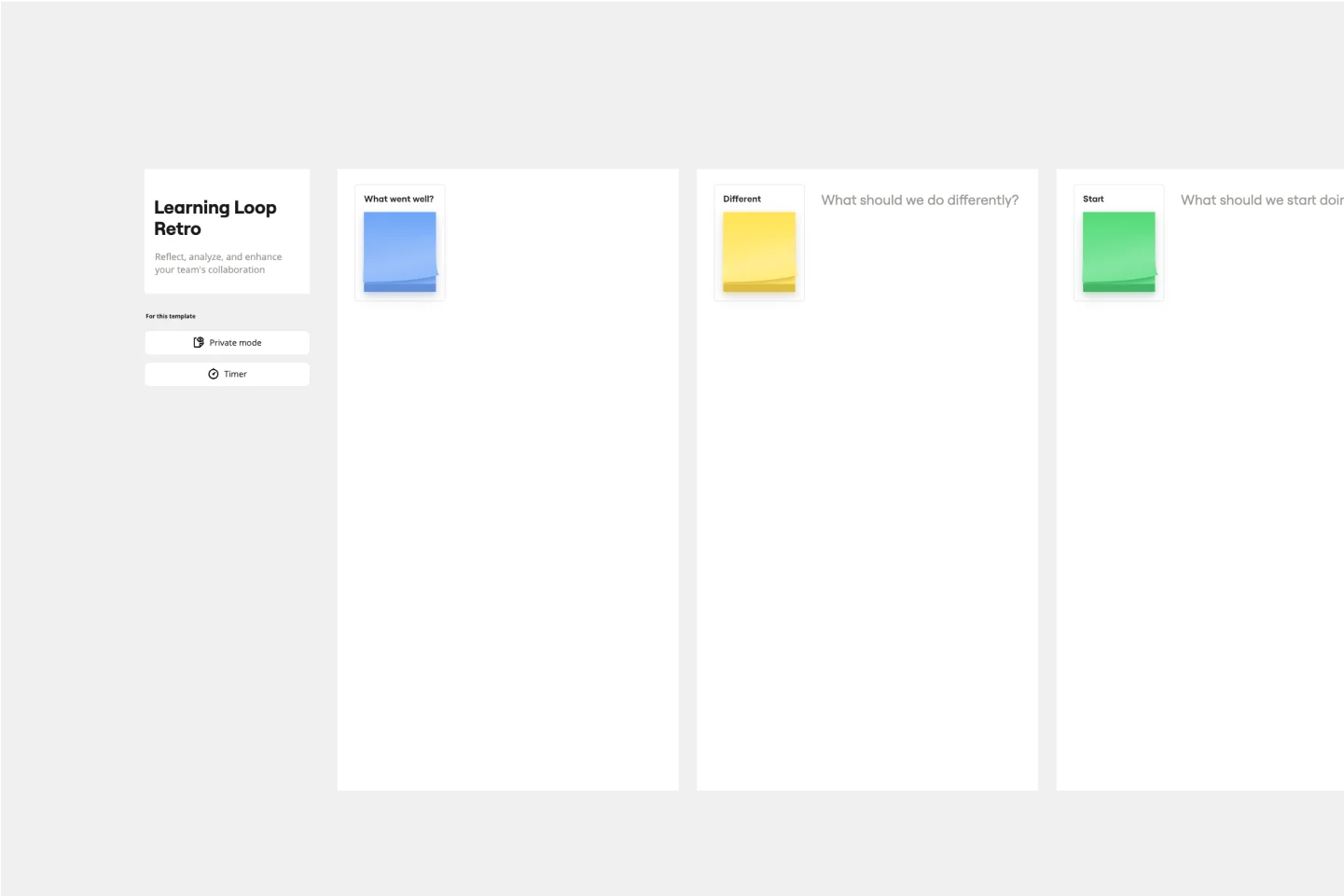About the Mad Sad Glad Retrospective
What is Mad Sad Glad?
After a Sprint, it can be helpful for the team to pause and take stock of how they feel. This is crucial for maintaining morale and getting the most out of each Sprint. But sometimes, it can be hard to gauge your team’s feelings with open-ended questions like “How are you feeling?” That’s why many teams choose to employ the Mad Sad Glad retrospective.
Mad Sad Glad is a popular technique for examining your team member's emotions and encouraging them to think about how they feel. You can use a retro tool to run a session and highlight the positive feelings your team might have after a Sprint, but also to underline concerns or questions they might have going forward.
When should you run a Mad Sad Glad retrospective?
This type of retrospective can be especially valuable when there is a negative team dynamic, or if there is tension but team members haven't spoken about it yet. Participants can find it useful to use a structured framework to talk about their emotions – particularly in a fast-paced, results-focused agile environment.
How to use the Mad Sad Glad template
Miro’s virtual collaboration platform is perfect for running a Mad Sad Glad retrospective with your team. Simply select the template and invite your team to join.
The facilitator should give everyone 30-60 minutes to think about how they felt about the previous sprint. Then, allow the respondents some time to take stock of their feelings and write down the highlights on the Mad Sad Glad template. Were there parts of the Sprint that left them angry? Upset? Or satisfied? When the team is finished writing, bring everyone together to discuss. The facilitator can ask follow-up questions and take notes throughout the process.
4 tips for running a Mad Sad Glad retrospective
1. Give people space and time to reflect
Make sure the team has about 30 to 60 minutes of uninterrupted time to take stock of how they feel. Encourage people to take copious notes. Make sure the room is quiet and out of the way.
2. Make sure phones are turned off
Ask all attendees to turn off their phones so they can focus on the retrospective. If people are distracted by their phones, then they will find it harder to reflect.
3. Be inclusive
Assure everyone that there are no right or wrong answers. Remember, the goal of Mad Sad Glad is to take stock of how everyone is feeling, not to brainstorm processes or strategies.
4. Keep the focus on emotions
Encourage your team to focus on emotion, not action. People who might feel uncomfortable sharing their feelings sometimes instead try to pivot to strategy. Gently encourage them to avoid that.
3 reasons to use a Mad Sad Glad retrospective?
The Mad Sad Glad Retrospective is specifically focused on the team's emotional journey, and this is a unique approach with different benefits from a normal agile retrospective.
1. Build trust
By giving team members a space to discuss their feelings and emotions about the work they’ve done, you encourage honesty and forthrightness. Creating more honest, open, and positive teams ultimately help team members trust each other.
2. Improve morale
Almost everyone will struggle with certain things or get frustrated, and oftentimes workplaces don’t provide an avenue to talk about these frustrations. Giving employees an opportunity to talk through their difficulties will help them feel more welcomed, and ultimately boost morale.
3. Increase engagement
If team members are frustrated and don’t feel heard, they tend to check out. With a Mad Sad Glad retrospective, those team members can speak up and work towards solving their problems and building a more inclusive workspace where people can stay engaged.
You can also explore all project retrospective templates available through our collection.

Miro
Your virtual workspace for innovation
Miro is an innovation workspace designed for teams of every size, everywhere, to dream, design, and build the future together. Our mission? To empower these teams to create the next big thing, powered by AI at every step of the way. Over 90 million users around the world rely on Miro to untangle complex ideas, put customer needs first, and deliver products and services faster. All supported by best-in-class security, compliance, and scalability.
Categories
Similar templates
Rose, Bud, Thorn Template

Rose, Bud, Thorn Template
The Rose, Bud, Thorn template is a structured method for team reflection and feedback, designed to help teams identify positive aspects, potential opportunities, and challenges within a project or situation. One key benefit of using this template is its ability to promote balanced feedback and productive discussions, which can lead to improved team processes and outcomes.
4 L's Retrospective Template

4 L's Retrospective Template
So you just completed a sprint. Teams busted their humps and emotions ran high. Now take a clear-eyed look back and grade the sprint honestly—what worked, what didn’t, and what can be improved. This approach (4Ls stand for liked, learned, lacked, and longed for) is an invaluable way to remove the emotion and look at the process critically. That’s how you can build trust, improve morale, and increase engagement—as well as make adjustments to be more productive and successful in the future.
Quick Retrospective Template

Quick Retrospective Template
A retrospective template empowers you to run insightful meetings, take stock of your work, and iterate effectively. The term “retrospective” has gained popularity over the more common “debriefing” and “post-mortem,” since it’s more value-neutral than the other terms. Some teams refer to these meetings as “sprint retrospectives” or “iteration retrospectives,” “agile retrospectives” or “iteration retrospectives.” Whether you are a scrum team, using the agile methodology, or doing a specific type of retrospective (e.g. a mad, sad, glad retrospective), the goals are generally the same: discovering what went well, identifying the root cause of problems you had, and finding ways to do better in the next iteration.
Learning Loop Retro Template

Learning Loop Retro Template
The Learning Loop Retro template is a powerful tool designed to help teams reflect on their projects by recognizing successes and identifying areas for improvement. This template is part of Miro's Intelligent templates, which streamline workflows and keep teams engaged by integrating AI, interactive tools, and seamless integrations. One key benefit of the Learning Loop Retro template is its ability to drive continuous improvement. By regularly reflecting on their work and identifying areas for enhancement, teams can consistently elevate their performance and achieve better outcomes.
Rose, Bud, Thorn Template

Rose, Bud, Thorn Template
The Rose, Bud, Thorn template is a structured method for team reflection and feedback, designed to help teams identify positive aspects, potential opportunities, and challenges within a project or situation. One key benefit of using this template is its ability to promote balanced feedback and productive discussions, which can lead to improved team processes and outcomes.
4 L's Retrospective Template

4 L's Retrospective Template
So you just completed a sprint. Teams busted their humps and emotions ran high. Now take a clear-eyed look back and grade the sprint honestly—what worked, what didn’t, and what can be improved. This approach (4Ls stand for liked, learned, lacked, and longed for) is an invaluable way to remove the emotion and look at the process critically. That’s how you can build trust, improve morale, and increase engagement—as well as make adjustments to be more productive and successful in the future.
Quick Retrospective Template

Quick Retrospective Template
A retrospective template empowers you to run insightful meetings, take stock of your work, and iterate effectively. The term “retrospective” has gained popularity over the more common “debriefing” and “post-mortem,” since it’s more value-neutral than the other terms. Some teams refer to these meetings as “sprint retrospectives” or “iteration retrospectives,” “agile retrospectives” or “iteration retrospectives.” Whether you are a scrum team, using the agile methodology, or doing a specific type of retrospective (e.g. a mad, sad, glad retrospective), the goals are generally the same: discovering what went well, identifying the root cause of problems you had, and finding ways to do better in the next iteration.
Learning Loop Retro Template

Learning Loop Retro Template
The Learning Loop Retro template is a powerful tool designed to help teams reflect on their projects by recognizing successes and identifying areas for improvement. This template is part of Miro's Intelligent templates, which streamline workflows and keep teams engaged by integrating AI, interactive tools, and seamless integrations. One key benefit of the Learning Loop Retro template is its ability to drive continuous improvement. By regularly reflecting on their work and identifying areas for enhancement, teams can consistently elevate their performance and achieve better outcomes.